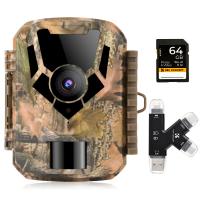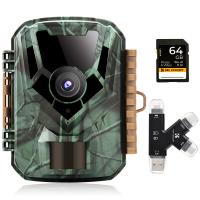How Do You Transfer Files To Sd Card?
Transferring files to an SD card is a common task that many people need to perform, whether to free up space on their primary storage device, to back up important data, or to share files between devices. This article will guide you through the various methods of transferring files to an SD card, covering different devices and operating systems. By the end of this article, you should have a clear understanding of how to efficiently and effectively move your files to an SD card.
Understanding SD Cards

Before diving into the methods of transferring files, it's important to understand what an SD card is and the different types available. SD cards (Secure Digital cards) are a type of removable storage device used in various electronic devices such as cameras, smartphones, tablets, and computers. They come in different sizes and capacities, including:
- SD (Standard Digital): Up to 2GB
- SDHC (Secure Digital High Capacity): 2GB to 32GB
- SDXC (Secure Digital Extended Capacity): 32GB to 2TB
Preparing Your SD Card

1. Check Compatibility: Ensure that your device supports the type and capacity of the SD card you intend to use.
2. Format the SD Card: Formatting the SD card ensures that it is clean and ready for use. This can usually be done through the device's settings or via a computer.
Transferring Files on Different Devices

1. Transferring Files on Windows PC
Using File Explorer:
1. Insert the SD card into the SD card slot or connect it via an SD card reader.
2. Open File Explorer and locate the SD card under "This PC" or "My Computer."
3. Open another File Explorer window and navigate to the files you want to transfer.
4. Drag and drop the files from your computer to the SD card.
Using Command Prompt:
1. Insert the SD card and open Command Prompt.
2. Use the `cd` command to navigate to the directory containing the files you want to transfer.
3. Use the `copy` command to transfer files. For example: `copy C:\path\to\file E:\` (where E: is the SD card drive).
2. Transferring Files on macOS
Using Finder:
1. Insert the SD card into the SD card slot or connect it via an SD card reader.
2. Open Finder and locate the SD card under "Devices."
3. Open another Finder window and navigate to the files you want to transfer.
4. Drag and drop the files from your Mac to the SD card.
Using Terminal:
1. Insert the SD card and open Terminal.
2. Use the `cd` command to navigate to the directory containing the files you want to transfer.
3. Use the `cp` command to transfer files. For example: `cp /path/to/file /Volumes/SDCard/` (where SDCard is the name of the SD card).
3. Transferring Files on Android Devices
Using File Manager App:
1. Insert the SD card into your Android device.
2. Open the File Manager app (this may vary depending on the device).
3. Navigate to the files you want to transfer.
4. Select the files and choose the "Move" or "Copy" option.
5. Navigate to the SD card and paste the files.
Using a Computer:
1. Connect your Android device to the computer via USB.
2. Select "File Transfer" mode on your Android device.
3. Open File Explorer (Windows) or Finder (macOS) on your computer.
4. Locate your Android device and navigate to the files you want to transfer.
5. Drag and drop the files to the SD card.
4. Transferring Files on iOS Devices
iOS devices do not natively support SD cards, but you can use external SD card readers that connect via the Lightning port.
Using an SD Card Reader:
1. Connect the SD card reader to your iOS device.
2. Insert the SD card into the reader.
3. Open the Files app on your iOS device.
4. Navigate to the files you want to transfer.
5. Select the files and choose the "Move" option.
6. Navigate to the SD card and paste the files.
Troubleshooting Common Issues

1. SD Card Not Recognized: Ensure the SD card is properly inserted and compatible with your device. Try using a different card reader or device.
2. File Transfer Errors: Check for sufficient space on the SD card and ensure the files are not corrupted.
3. Slow Transfer Speeds: Use a high-speed SD card and card reader to improve transfer speeds.
Best Practices for File Management
1. Regular Backups: Regularly back up important files to avoid data loss.
2. Organize Files: Keep your files organized in folders for easy access and management.
3. Safely Eject SD Card: Always safely eject the SD card from your device to prevent data corruption.
Transferring files to an SD card is a straightforward process that can be accomplished using various methods depending on your device and operating system. Whether you're using a Windows PC, macOS, Android, or iOS device, the steps outlined in this article should help you efficiently move your files to an SD card. By following best practices for file management and troubleshooting common issues, you can ensure a smooth and successful file transfer experience.











There are no comments for this blog.